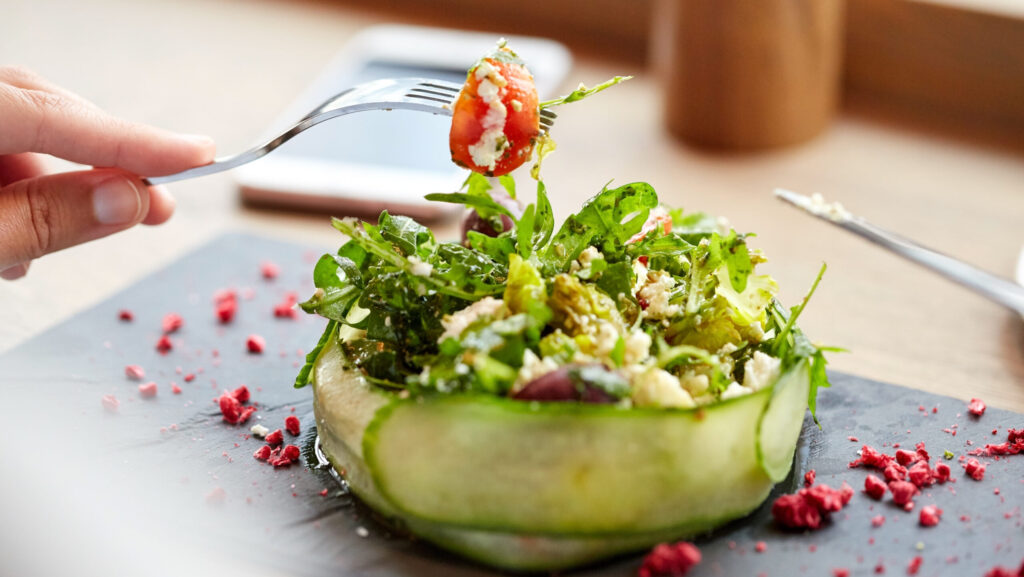By The Frontpage Journal
Sri Lankan cuisine is a vibrant tapestry woven from centuries of tradition, regional diversity, and cultural influences. From the smoky hearths of village kitchens to the sleek counters of urban cafés in Colombo, this culinary heritage continues to evolve. As health trends and global fusion styles gain popularity, traditional recipes are being reimagined, creating dishes that honor the past while embracing the present.
At its core, Sri Lankan food celebrates bold flavors and fresh ingredients. Classic meals revolve around rice accompanied by an array of curries, sambols, and pickles. The careful balance of spices—cumin, coriander, cardamom, and cinnamon—creates layers of taste that are both complex and comforting. Coconut, fresh vegetables, and seafood also play starring roles, reflecting the island’s geography and agricultural richness.
In rural homes, recipes have been passed down through generations, often prepared with simple tools and seasonal produce. Meals are crafted to nourish not only the body but community bonds, with shared eating a daily ritual. Village cooks rely on intuition and tradition, using time-tested methods like slow roasting, tempering spices, and fermenting ingredients to achieve authentic flavors.
However, as urban lifestyles accelerate and global influences arrive, Sri Lankan cuisine is experiencing a transformation. Increasing health awareness has led to adaptations such as reduced oil use, incorporation of whole grains, and alternative protein sources like lentils and jackfruit. Chefs and home cooks alike are experimenting with gluten-free flours, organic vegetables, and traditional herbs known for their medicinal properties.

Urban cafés and restaurants in Colombo and other cities are at the forefront of this culinary evolution. Many are blending Sri Lankan ingredients with international techniques to create fusion dishes that appeal to both local and foreign palates. For example, traditional hoppers are being reinvented with quinoa or multigrain flours, served alongside avocado or smoked salmon. Kottu roti, once street food, now appears in gourmet forms with exotic sauces or plant-based meats.
This fusion trend extends beyond ingredients. Presentation styles have shifted to match global aesthetics, with colorful plates and minimalist plating replacing rustic serving methods. Social media also plays a role, with visually striking dishes shared widely, helping popularize new interpretations of Sri Lankan classics.
Despite these changes, respect for heritage remains strong. Many chefs actively seek to preserve the essence of traditional flavors, often collaborating with village producers to source authentic spices and ingredients. There is also a renewed interest in forgotten recipes, indigenous crops, and ancestral cooking techniques, reflecting a broader movement to reconnect with roots amid modernization.
The interplay between tradition and innovation is evident in festivals and food markets as well. Events celebrating local harvests or specific dishes bring together cooks from across the country, showcasing both time-honored recipes and creative new variations. These gatherings serve as platforms for dialogue between generations and regions, strengthening the culinary community.
For foreign visitors, this evolving food scene offers a dynamic taste of Sri Lanka’s identity. It presents familiar flavors in fresh contexts, inviting exploration and appreciation beyond stereotypes. For locals, it is a source of pride and inspiration, demonstrating how their cuisine can adapt and thrive in a globalized world without losing its soul.
The journey of Sri Lankan cuisine from village kitchens to urban cafés is a story of resilience and creativity. It reveals how food can connect past and present, tradition and innovation, health and indulgence. In every plate, one finds the heartbeat of the island—rich, diverse, and always evolving.




